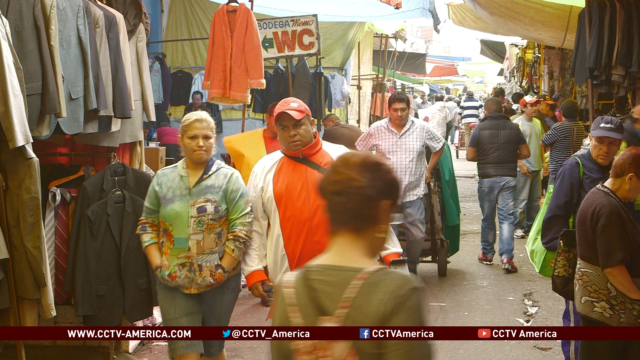The neighborhood of Tepito in Mexico City is the oldest area of the capital. So it’s surprising that in Mexico, it goes by a different name: Barrio Bravo, “the fierce neighborhood.” It gets its nickname from being one of the most dangerous areas in the city.
A huge marketplace highlights the center of the neighborhood. Here, one can find just about any goods or services they’re looking for, from umbrellas and souvenirs, to illegal weapons and hit men. You read that correctly. What was once, in colonial times, a small marketplace has turned into the most notorious black market in Mexico.
Tepito’s merchandise finds its way as far north as New York City and comes from as far east as China. Guns, drugs and counterfeit items are ordered from the far east, shipped to Belize, and then find their way north. The merchandise is smuggled past Mexican border authorities who have either turned a blind eye or have been bribed. This is done discretely, however, and a casual visitor of the barrio would most likely have no idea what is taking place. Years and years of smuggling have led to an immense labyrinth of tunnels and warehouses that allow gangs to act with impunity.
The brutal cartels of Northern Mexico come to Tepito to recruit as well. Young men who have no other way out of the slums find themselves enticed by the promise of money and a better life if they join the war against other cartels and Mexican government. Interestingly enough, in the barrio, the violence between warring factions breaks. The gangs use Tepito as a free market zone, a safe place to buy illegal goods in bulk.
Perhaps the most dangerous trade conducted in Tepito is contract killing. Cartels hire hit men when they need someone who other cartels won’t recognize to kill from the inside. Young men often begin by robbing, then, when they have become accomplished or old enough, they get hired to kill. The penalty for these men is often death as well, but a twenty year veteran of the profession says it’s a way to live and work.
Few enter the Barrio to film and leave with their cameras, but CCTV America’s correspondent John Holman braves Barrio Bravo and even manages to talk those involved in its illicit dealings.

 CGTN America
CGTN America
